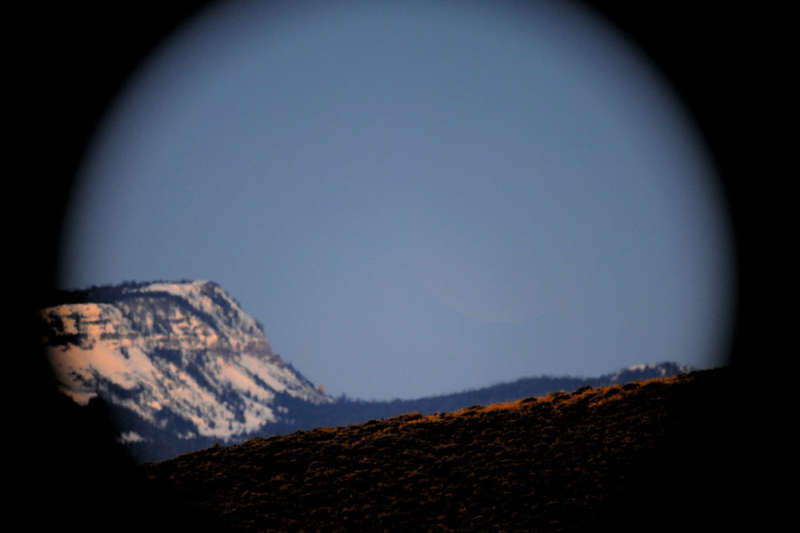
|
Credit & Copyright: Jimmy Westlake
(Colorado Mountain College)
Explanation:
Where's the full Moon?
Somewhere in this image, the Earth's Moon is hiding.
The entire Moon is visible, in its completely full phase, in plain sight.
Even the photographer's keen eye couldn't find it even though he knew exactly where
to look -- only the
long exposure of his camera picked it up -- barely.
Although by now you might be congratulating yourself on finding it, why was it so difficult to see?
For one reason, this photograph was taken during the
total lunar eclipse last month, when the Earth's shadow
made the Moon much dimmer than a normal full Moon.
For another, the image, taken in
Colorado,
USA,
was captured just 12 minutes before sunrise.
With the Moon on the exact opposite side of the sky from the Sun, this meant that
the Sun was just below the horizon, but still
slightly illuminating
the sky.
Last, as the
Moon was only about two degrees above the horizon, the
large volume of air between the camera and the horizon scattered a lot of light
away from the
background Moon.
Twelve minutes after this image was acquired the Sun peeked over the horizon and
the Moon set.
Discovery + Outreach:
Graduate student research position open for APOD
|
January February March April May June July August September October November December |
| |||||||||||||||||||||||||||||||||||||||||||||||||||||||
NASA Web Site Statements, Warnings, and Disclaimers
NASA Official: Jay Norris. Specific rights apply.
A service of: LHEA at NASA / GSFC
& Michigan Tech. U.
Based on Astronomy Picture
Of the Day
Publications with keywords: Moon - total lunar eclipse
Publications with words: Moon - total lunar eclipse
See also:
- APOD: 2025 September 12 Á Lunar Eclipse in Two Hemispheres
- APOD: 2025 August 23 Á Fishing for the Moon
- APOD: 2025 July 20 Á Lunar Nearside
- APOD: 2025 June 28 Á Lunar Farside
- APOD: 2025 June 20 Á Major Lunar Standstill 2024 2025
- APOD: 2025 June 18 Á Space Station Silhouette on the Moon
- APOD: 2025 April 22 Á Terminator Moon: A Moonscape of Shadows
